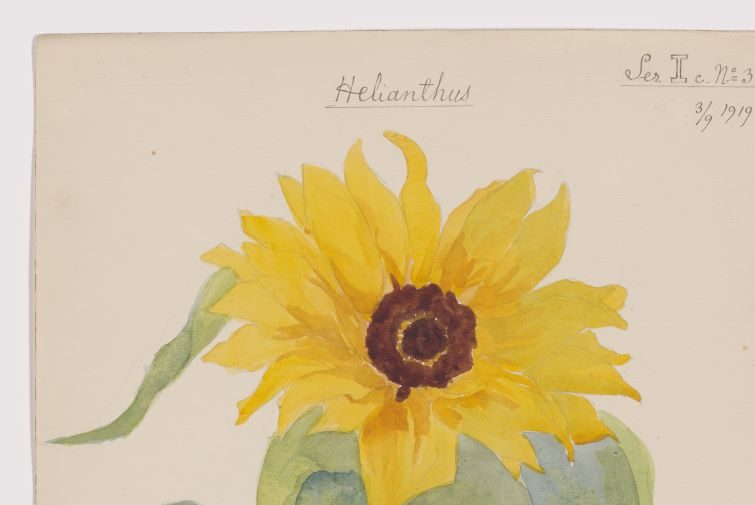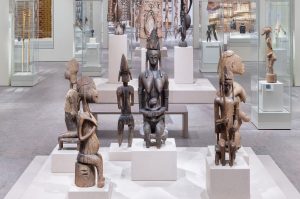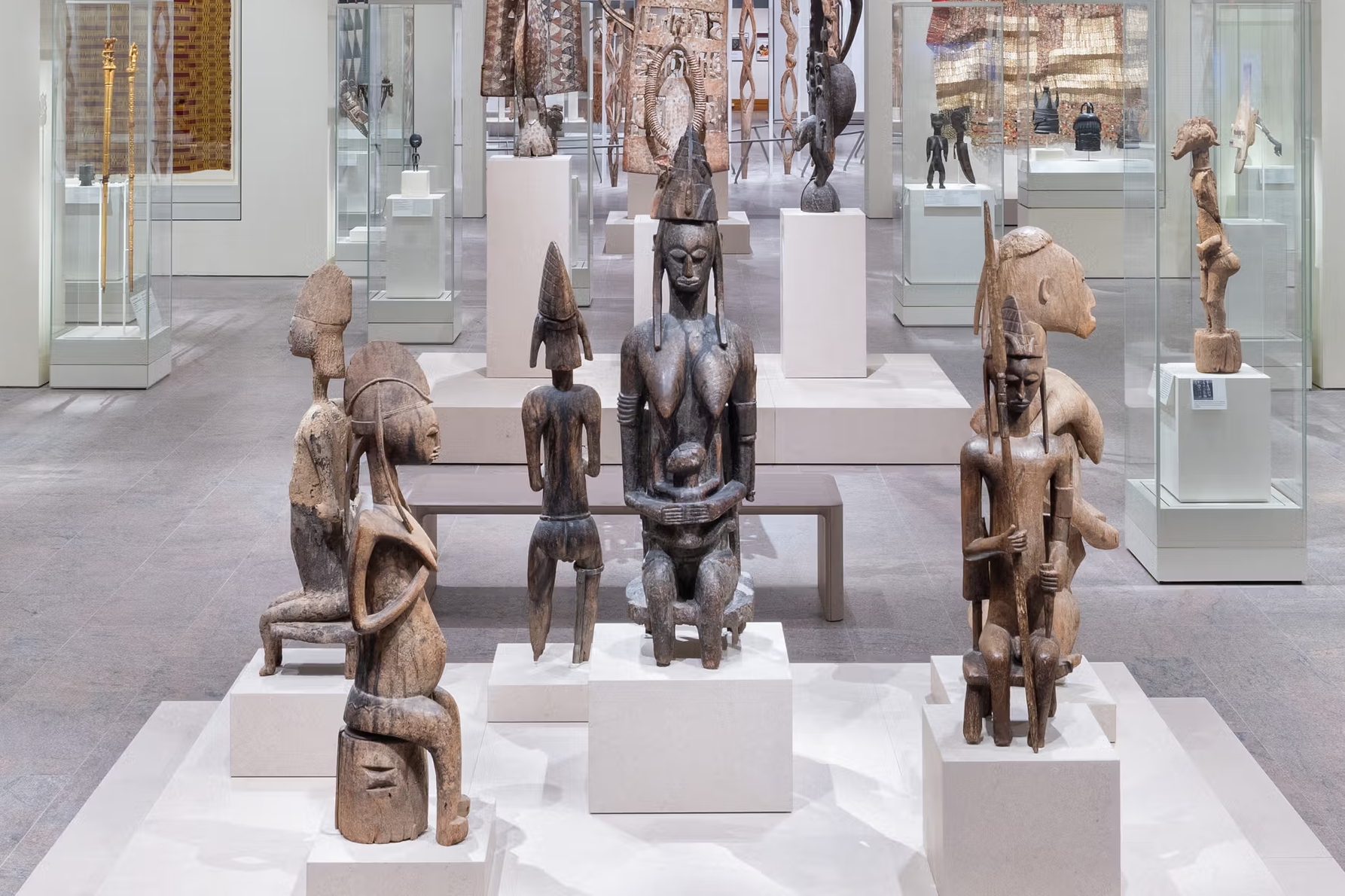At the corner of Manhattan’s Tenth Avenue and 22nd Street, there is a mural by the Brazilian artist Eduardo Kobra. Situated over the landmark Empire Diner, Kobra’s painting reimagines Mount Rushmore as a paean to art stardom or, depending on how one looks at these things, the tragically hip and perpetually overrated.
Kobra supplants George Washington, Thomas Jefferson, Abraham Lincoln and Theodore Roosevelt with the graffiti artists Keith Haring and Jean-Michel Basquiat, the Mexican fabulist Frida Kahlo and the melanin-deprived panjandrum of Pop, Andy Warhol. These cultural icons loom over the crowds supping on blistered shishitos and tuna tartare inside the diner.
Having walked the dog past Kobra’s mural more times than bears counting, I’ve often wondered when the Swedish painter Hilma af Klint (1862–1944) will join their ranks. Few artists in recent memory have scaled the heights of popular taste quite as rapidly. A 2018 exhibition at the Guggenheim, “Hilma af Klint: Paintings for the Future,” was a watershed moment – Af Klint’s story keyed into ideological currents held dear by our educated classes, to wit: prescient womanhood, anticapitalism and a denial of rationalism. She was dubbed the real inventor of abstract art.
You mean to say that a lady painter beat Vassily Kandinsky to the punch as the inventor of abstraction and did so by ignoring the marketplace and conferring with otherworldly entities? Audiences who previously had little taste for nonrepresentational art found themselves entranced by her diagrammatic accumulations of swirls and circles, blips and biomorphs. Frank Lloyd Wright’s rotunda could barely accommodate the crowds. Since then, the af Klint fan base has only grown.
Should you be curious about an artist who considered herself an “atom in the universe, possessing infinite possibilities,” be advised that the Museum of Modern Art’s exhibition “Hilma af Klint: What Stands Behind the Flowers” offers a sampling of preparatory works-on-paper. Curated by Jodi Hauptman, the exhibition showcases MOMA’s acquisition of nearly 50 of af Klint’s botanical studies.
Af Klint’s family summers were spent at Hanmora, an exclusive manor on an island in Lake Mälaren, a locale where Hilma first had unmediated contact with the natural world. She went on to study at Stockholm’s Royal Academy of Fine Arts, where she proved herself adept at realism – so much so that she earned an income from portrait commissions and landscapes.
Historians conjecture that it was the death of her younger sister, Hermine, that prompted af Klint’s interest in Spiritism, but, hey, that stuff was in the air back in the day. The Russian mystic Madame Blavatsky and proud New Jerseyite Henry Steel Olcott cofounded The Theosophical Society, a group that cherry-picked its tenets from philosophical, scientific and occultist beliefs from all over the world. Af Klint joined the society’s Swedish branch and fostered a community of like-minds overseen by a cadre of deities known as The High Masters.
So much hocus-pocus, right? Still, when the High Masters called, af Klint up-and-answered. Two of the highest among them designated Hilma and only Hilma as the artist capable of creating decorative panels for a devotional space to be erected at some nebulous point in the future. The resulting pictures, collectively titled “The Paintings of the Temple,” are impressive, with their towering scale, sugary colors and bobbing pictographs.
The MOMA show offers a peek behind the curtain from which the oracle of Stockholm laid out the building blocks of her iconography, but the peek is by no means definitive. The High Masters were a demanding lot. A stress-laden af Klint sought relief from their hectoring by stepping outside the studio and communing with buttercups, horsetails and milkwort – in so many words, the real world.
“What Stands Behind the Flowers” is a genteel venture that highlights a sensibility rooted in the conventions of scientific illustration. The pieces are fairly uniform in size – typically about 19” x 10” – and delineated in pencil and watercolor with touches of ink and metallic pigment. Each page is dominated by a sizable rendering of botanical example or two and is offset by geometric notations with specific symbolic undercurrents – among them, “Humble longing, peace and harmony” and “Less selfishness/Greater complacency.”
Racks of magnifying glasses are provided for those museumgoers wanting to glean the details of af Klint’s brushwork, which prove more interesting as examples of painterly shorthand than of botanical exactitude. These drawings are introduced by a group of tightly stylized floral glyphs and back-ended by loose-limbed color studies sorely in need of her lattice-like linearity.
A smattering of schematic charts, as well as a vitrine of documentary items (including preserved specimens of plants), punctuate an exhibition that is less an earth-shaking visitation than a diligent feat of scholarship. As such, “What Stands Behind the Flowers” is likely to leave the uninitiated scratching their heads in equal degrees of admiration and puzzlement.


























Leave a Reply